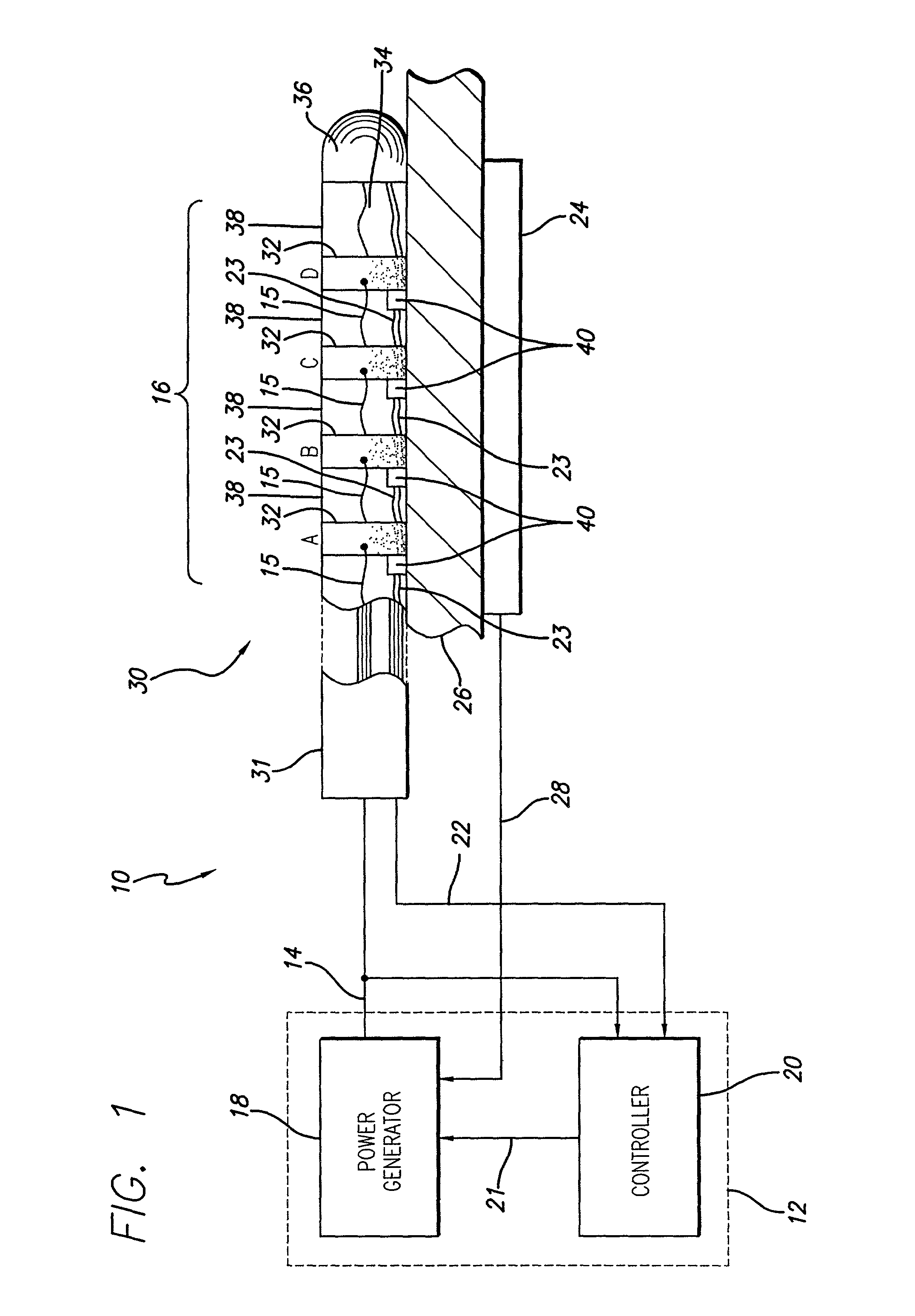Ablation system and method having multiple-sensor electrodes to assist in assessment of electrode and sensor position and adjustment of energy levels
a technology of multiplesensor electrodes and electrodes, applied in the field of electrophysiology apparatuses and methods, can solve problems such as interference with the passage of regular electrical signals, damage to the conductive tissue of the heart, and inability to detect the position of the electrode and the sensor, and achieve the effect of facilitating rapid visual assimilation of current devices/thermals
- Summary
- Abstract
- Description
- Claims
- Application Information
AI Technical Summary
Benefits of technology
Problems solved by technology
Method used
Image
Examples
Embodiment Construction
[0055] Turning now to the drawings, in which like reference numerals are used to designate like or corresponding elements among the several figures, in FIG. 1 there is shown an ablation apparatus 10 in accordance with aspects of the present invention. The apparatus 10 includes a power control system 12 that provides power or drive 14 to an electrode device 16. The power control system 12 comprises a power generator 18 that may have any number of output channels through which it provides the power 14. The operation of the power generator 18 is controlled by a controller 20 or processor which outputs control signals 21 to the power generator 18. The controller 20 monitors the power 14 provided by the power generator 18. In addition, the controller 20 also receives temperature signals 22 from the electrode device 16. Based on the power 14 and temperature signals 22 the controller 20 adjusts the operation of the power generator 18. A backplate 24 is located proximal to the biological si...
PUM
 Login to View More
Login to View More Abstract
Description
Claims
Application Information
 Login to View More
Login to View More - R&D
- Intellectual Property
- Life Sciences
- Materials
- Tech Scout
- Unparalleled Data Quality
- Higher Quality Content
- 60% Fewer Hallucinations
Browse by: Latest US Patents, China's latest patents, Technical Efficacy Thesaurus, Application Domain, Technology Topic, Popular Technical Reports.
© 2025 PatSnap. All rights reserved.Legal|Privacy policy|Modern Slavery Act Transparency Statement|Sitemap|About US| Contact US: help@patsnap.com



